Becoming a YouTuber is an increasingly popular career aspiration in the digital age. With billions of users watching videos daily, the platform offers a unique opportunity to turn creativity and passion into a profitable venture. But, if you’re considering diving into content creation, a crucial question arises: how much money do YouTubers make?
The truth is, there’s no simple, one-size-fits-all answer. YouTuber income varies enormously based on a multitude of factors, from subscriber counts and video views to engagement rates, niches, and diverse monetization strategies. While a small percentage of creators reach millionaire status, the reality for most is a more modest income, and for many, earning a sustainable living from YouTube requires dedication, strategic planning, and diversified revenue streams.
This comprehensive guide breaks down the complex world of YouTube earnings. We’ll explore how channel size impacts income, the essential steps to monetize your content, the various factors that influence your revenue, and the alternative income sources successful YouTubers leverage to maximize their earnings. If you’re curious about How Much Money Youtubers Make and want to understand the path to YouTube profitability, keep reading.
How Much Do YouTubers Make Based on Channel Size?
While subscriber count isn’t a direct dollar-to-view conversion metric, it’s a significant indicator of a channel’s potential earning power. A larger subscriber base generally translates to more views, higher ad revenue, and greater opportunities for sponsorships and brand collaborations. YouTube’s recommendation algorithm also tends to favor channels with more subscribers, further amplifying their reach.
However, it’s crucial to remember that niche, audience engagement, and monetization strategies are equally important. Let’s explore potential income ranges based on typical channel size categories:
Beginner YouTubers (1,000+ Subscribers): Early Monetization
For aspiring YouTubers, reaching the 1,000 subscriber milestone is a crucial first step. This threshold unlocks eligibility for the YouTube Partner Program (YPP), allowing creators to start monetizing their content through ads and other features.
While income at this stage is typically modest, beginner YouTubers with 1,000 subscribers can expect to earn approximately $30 to $300 per month through AdSense, depending on their niche, audience demographics, and video performance.
It’s worth noting that achieving 1,000 subscribers places you ahead of the vast majority of channels on YouTube. In fact, statistics show that only about 9% of YouTube channels surpass this mark, highlighting the effort and dedication required to reach this initial monetization level.
Sponsorships and brand deals are less frequent at this stage, but not entirely out of reach, especially for channels in highly specific or engaging niches.
Mid-Range YouTubers (100,000+ Subscribers): Stepping Up the Game
Reaching 100,000 subscribers marks a significant step towards professional YouTube content creation. Channels in this range enter a more exclusive tier, with only about 0.3% of YouTube accounts achieving this level. At this point, many creators begin to consider YouTube as a part-time or even full-time career.
Mid-range YouTubers can expect to see a substantial increase in earnings, ranging from $500 to $5,000 or more per month. This income jump is driven by higher ad revenue from increased views, more frequent brand sponsorships, and the potential for affiliate marketing and merchandise sales to become more consistent revenue streams.
Viral videos become more likely at this stage, further boosting visibility and income. However, earnings within this bracket can still vary widely depending on the creator’s niche, audience engagement, and success in diversifying their income sources beyond AdSense.
Famous YouTubers (1 Million+ Subscribers): The Big Leagues
Once a channel surpasses the 1 million subscriber mark, creators enter the realm of highly successful YouTubers. These channels often operate as full-fledged brands, with dedicated teams supporting their content creation and business operations.
For YouTubers with over 1 million subscribers, monthly AdSense revenue alone can range from $10,000 to $100,000 or even higher. Individual videos can generate significant income through sponsorships, brand deals, and merchandise sales, potentially earning anywhere from $20,000 to $50,000 per sponsored video. Annual revenues for these top-tier creators are typically in the millions of dollars.
Successful YouTubers at this level often expand their presence beyond YouTube, branching out into multiple channels, merchandise lines, and other business ventures, solidifying their status as recognizable brands.
YouTube Stars (50 Million+ Subscribers): Celebrity Status
At the pinnacle of YouTube success are the mega-star channels with over 50 million subscribers. These creators are true internet celebrities, with earnings reaching astronomical figures in the tens of millions of dollars annually. Currently, only a very select group of around 30 YouTubers globally have achieved this extraordinary subscriber count.
 How much YouTubers make from Adsense
How much YouTubers make from Adsense
Alt text: Graph illustrating potential monthly earnings of YouTubers based on subscriber tiers, from beginner to star level.
What Are the Prerequisites for YouTube Monetization?
The primary gateway to earning money directly from YouTube is the YouTube Partner Program (YPP), which utilizes Google AdSense for ad revenue distribution. To become eligible for monetization and join the YPP, creators must meet specific criteria:
- Subscriber and Watch Time Thresholds: Accumulate at least 1,000 subscribers and either 4,000 valid public watch hours in the past 12 months (excluding Shorts) or 10 million valid public YouTube Shorts views in the last 90 days.
- Compliance with YouTube Policies: Agree and adhere to YouTube’s Partner Program policies and Community Guidelines. Maintain a clean record without active Community Guidelines strikes.
- AdSense Account Setup: Have a valid and approved Google AdSense account linked to your YouTube channel.
- Channel Review and Approval: Pass YouTube’s channel review process to ensure compliance with all monetization policies.
Once accepted into the YPP, YouTubers can enable monetization on their videos and start earning revenue from ads. The amount earned through AdSense is directly tied to video views and ad performance metrics, which we’ll explore further.
Understanding CPC, CPM, and RPM for YouTube Earnings
To understand how YouTube ad revenue is calculated, it’s essential to grasp the key metrics: Cost Per Click (CPC), Cost Per Mille (CPM), and Revenue Per Mille (RPM). YouTube’s ad revenue sharing model is based on providing partners with 55% of ad revenues generated on their content.
- Cost Per Click (CPC): Advertisers using CPC bidding pay only when a viewer clicks on their ad. This means revenue is generated based on user engagement with the ad itself.
- Cost Per Mille (CPM): CPM, meaning “cost per thousand,” represents the amount advertisers pay for every 1,000 ad impressions. An ad impression is counted when an ad is displayed for at least 30 seconds (or the full duration if shorter than 30 seconds). CPM is based on ad views, not just video views.
Both CPC and CPM contribute to calculating the Revenue Per Mille (RPM), which is a crucial metric for YouTubers. RPM represents the actual revenue earned per 1,000 video views after YouTube takes its 45% share. RPM provides a clearer picture of a video’s monetization performance than raw CPM or CPC figures.
Example Calculation:
Let’s illustrate RPM with an example:
- Your video receives 5,000 views.
- Ads are displayed in half of these views, resulting in 2,500 ad impressions with a CPM of $10.
- 100 viewers click on ads, with an average CPC of $0.5.
Earnings Breakdown:
- CPM Earnings: (2,500 impressions / 1,000) * $10 = $25
- CPC Earnings: 100 clicks * $0.5 = $50
- Total Gross Earnings: $25 + $50 = $75
Your Share After YouTube’s Cut (45%):
$75 * (1 – 0.45) = $41.25
RPM Calculation:
RPM = ($41.25 / 5,000 views) * 1,000 = $8.25 per 1,000 views
In this example, with an RPM of $8.25, 5,000 daily views would translate to approximately $1,238 per month. While this is just an example, it highlights how RPM is a practical metric for estimating potential YouTube income based on video performance.
Key Factors Influencing YouTube Monetization
While views are fundamental to YouTube earnings, several other factors significantly impact a creator’s income potential. Understanding these elements is crucial for optimizing monetization strategies:
Video Length: Ad Placement Opportunities
Video length plays a direct role in ad revenue potential. Longer videos offer more opportunities to insert ads, particularly mid-roll ads placed within the video content. Pre-roll ads (at the beginning) and mid-roll ads generally command higher payouts compared to post-roll ads (at the end).
However, video length must be balanced with audience engagement. While longer videos can accommodate more ads, they must also hold viewer attention. Shorter, more concise videos may be more effective for attracting new viewers and building a subscriber base. Creators need to strategically consider content type and audience preferences when determining optimal video length for monetization and engagement.
Content Type: Evergreen vs. Trending Content
The type of content significantly impacts long-term monetization prospects. Evergreen content, such as tutorials (e.g., “how-to” guides, DIY projects) or educational videos, can attract views consistently over years, generating steady ad revenue streams. Evergreen content often has higher watch times, positively influencing ad impressions and overall earnings.
In contrast, trending content, like news commentary or event-focused vlogs, can generate high views and revenue in the short term, capitalizing on current events and social media trends. However, these videos typically have a shorter lifespan and view counts tend to decline rapidly once the trend fades. Balancing evergreen and trending content can be a strategic approach for sustained and fluctuating income streams.
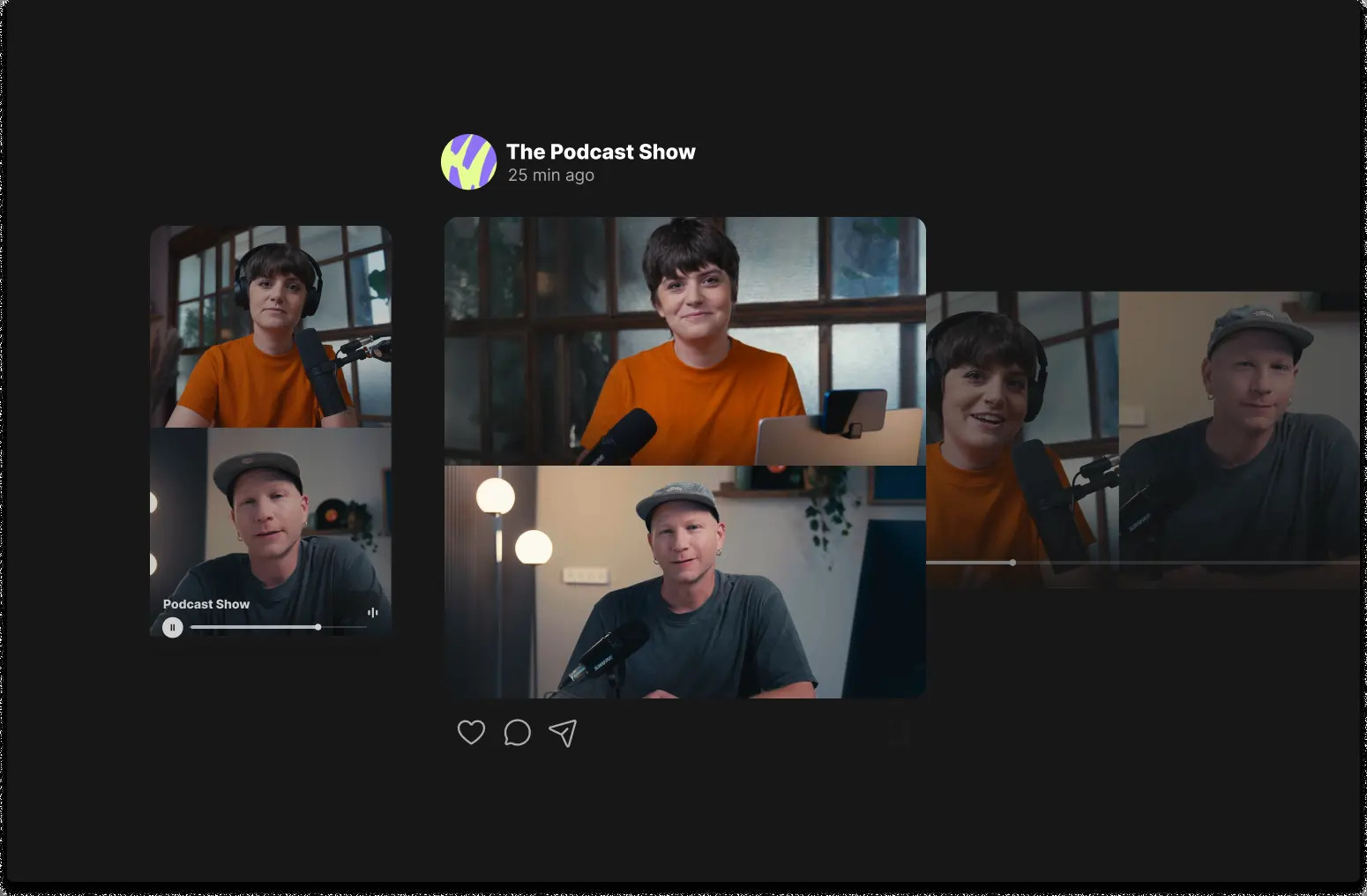 Different tyo
Different tyo
Alt text: Visual representation illustrating the difference between evergreen content for long-term monetization and trending content for short-term revenue spikes.
Niche and Demographics: Advertiser Demand
The chosen content niche and target audience demographics directly influence advertiser interest and ad rates. Niches like technology, finance, business, and education often attract higher-paying advertisers, resulting in better CPC and CPM rates. These niches typically appeal to demographics with higher purchasing power, making them attractive to brands targeting specific consumer segments.
Conversely, niches like gaming, entertainment, or humor may have lower average RPMs. Gaming content, for instance, often attracts younger audiences who may be less likely to engage with ads or have lower disposable income. Understanding your niche’s advertiser landscape and audience demographics is crucial for setting realistic income expectations and tailoring content strategies.
Geographic Audience: Market Value
The geographic location of your audience significantly impacts ad revenue. Advertisers are willing to pay more to reach viewers in high-spending regions, such as North America, Europe, and parts of Asia. These markets are characterized by higher disposable incomes and consumer spending, making them more valuable to advertisers.
The United States, with its massive user base of 247 million and high advertiser rates, is a particularly lucrative market. However, emerging markets like India, with 467 million active users, offer significant growth potential despite potentially lower average RPMs.
To maximize global reach and tap into diverse markets, many successful YouTubers utilize multilingual subtitles to make their content accessible to wider audiences. Tools like Riverside’s caption and subtitle generator can streamline this process, allowing creators to easily create SRT files and add subtitles in over 100 languages.
Diversifying Income Streams Beyond AdSense
While AdSense is often the initial monetization method for YouTubers, relying solely on ad revenue can be limiting and unpredictable. Successful full-time YouTubers typically diversify their income streams to create more stable and substantial earnings. Here are key alternative income sources:
Affiliate Marketing: Product Recommendations
Affiliate marketing is a popular and effective way for YouTubers to generate income by recommending products or services to their audience. Creators partner with brands or companies and include affiliate links in their video descriptions or within the video content itself. When viewers purchase through these links, the YouTuber earns a commission, typically ranging from 5% to 50% of the sale price.
Affiliate marketing is particularly effective when creators promote products relevant to their niche and audience interests. Channels focused on product reviews, tutorials, or lifestyle content often see significant success with affiliate partnerships. While YouTube’s official affiliate program requires channels to have at least 15,000 subscribers, creators can also pursue affiliate deals independently with brands.
Merchandise Sales: Brand Building and Fan Engagement
For YouTubers who have cultivated a strong brand identity and engaged audience, selling personal merchandise can be a lucrative income stream. Merchandise can range from branded apparel (t-shirts, hoodies) and accessories (mugs, hats) to niche-specific products aligned with the channel’s content.
Kimono Mom, a popular Japanese cooking YouTuber, exemplifies successful merchandise integration by selling her own line of umami sauce and kitchenware. Merchandise not only generates revenue but also strengthens brand recognition and fosters a stronger connection with fans.
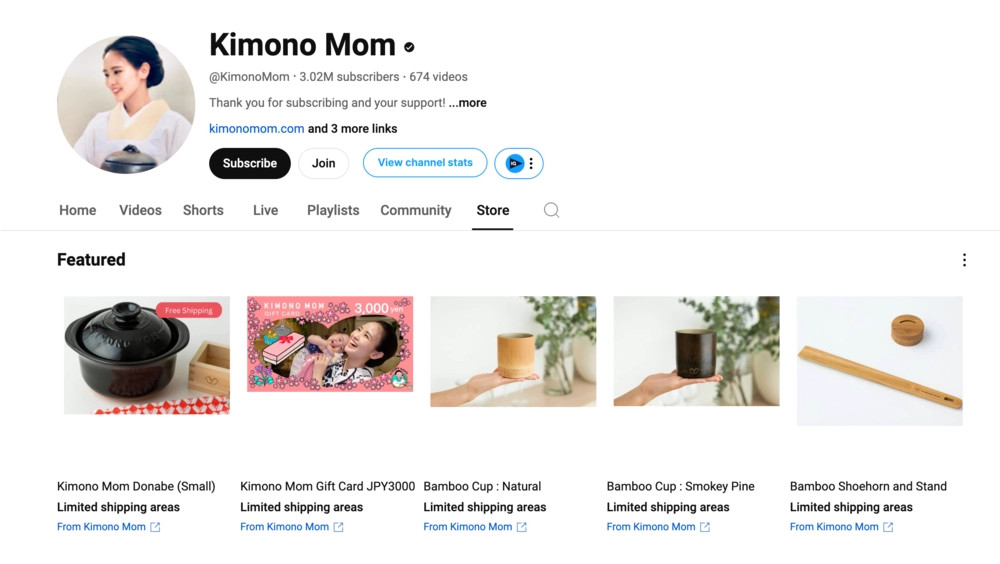 Kimono Mom making money from her YouTube merchandise
Kimono Mom making money from her YouTube merchandise
Alt text: Kimono Mom, a Japanese YouTuber, showcasing her branded merchandise store with umami sauce and kitchen appliances.
Channel Memberships and Crowdfunding: Direct Fan Support
Channel memberships and crowdfunding platforms like Patreon offer avenues for viewers to directly support their favorite creators with recurring payments. YouTube Channel Memberships allow viewers to pay a monthly fee for exclusive perks, such as custom badges, emojis, early access to content, or bonus videos. YouTube takes a 30% cut of membership revenue.
Patreon provides an alternative platform for creators to solicit tips, donations, and subscriptions from their audience. Patreon often allows for more flexible reward systems and direct creator-fan interaction. Gaming YouTuber Josh Strife Hayes publicly acknowledges Patreon supporters by listing their names at the end of his videos, fostering community and appreciation.
Digital Products and Services: Leveraging Expertise
YouTubers with specialized knowledge or skills can leverage their platform to market and sell digital products or business services. This can include e-books, online courses, templates, presets, consulting services, or coaching programs. YouTube serves as a powerful marketing tool to showcase expertise and attract potential clients or customers.
Neil Patel, a prominent digital marketing expert, utilizes his YouTube channel to share SEO tips and digital business advice, driving traffic and leads to his digital marketing agency. This approach effectively converts YouTube visibility into business opportunities.
Brand Sponsorships: Direct Brand Partnerships
Brand sponsorships are a significant income source for established YouTubers. Creators partner directly with brands to promote products or services in their videos. Sponsorships can take various forms, including product placements, dedicated video segments, integrated brand mentions, or sponsored video series.
Payment for sponsorships varies widely based on channel size, niche, audience demographics, engagement rates, and the scope of the campaign. Highly influential creators can command substantial fees for brand integrations. Riverside, for example, partnered with Premiere Gal, a popular video editing tutorial YouTuber, for a sponsored collaboration.
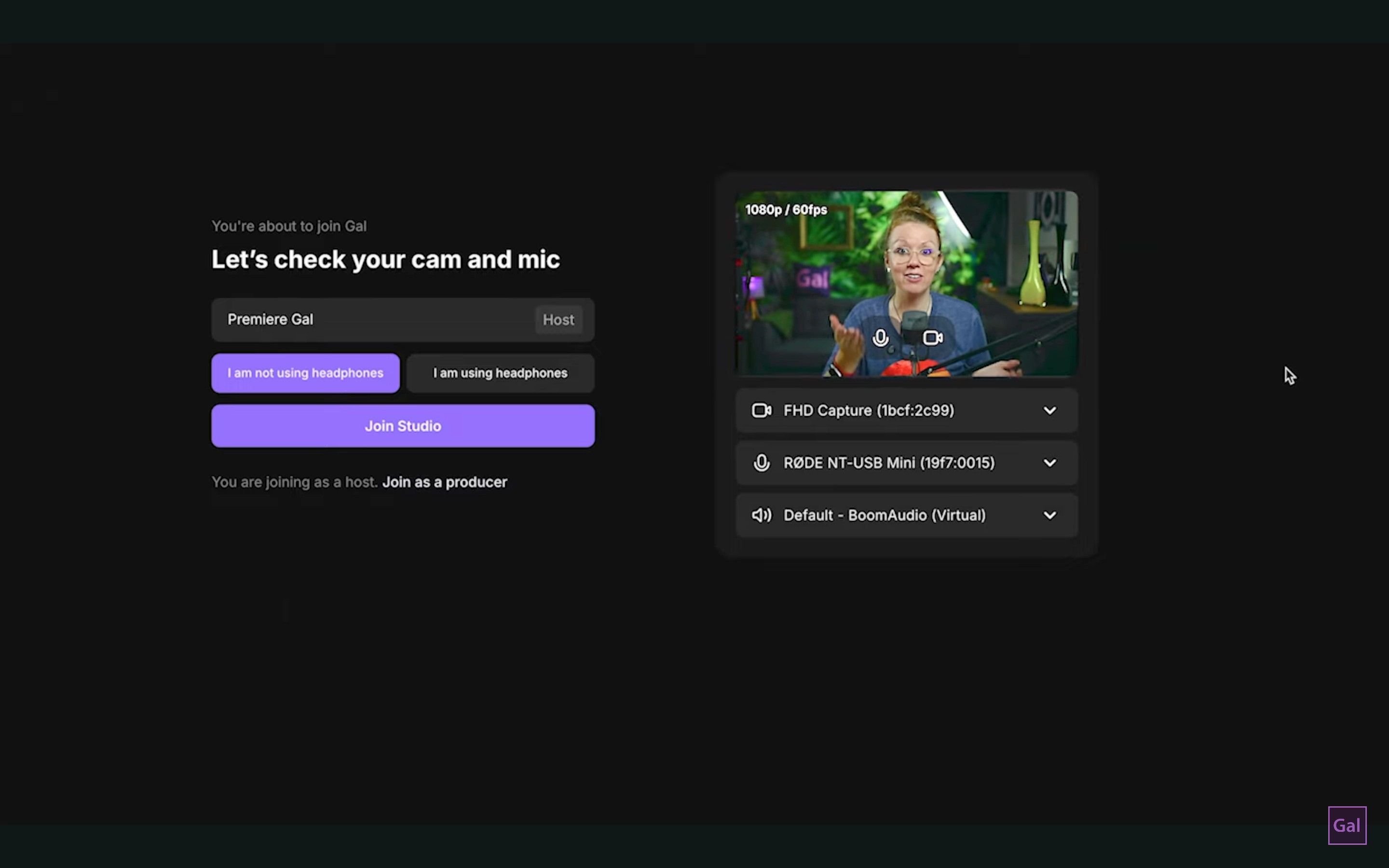 Premiere Gal promoting Riverside
Premiere Gal promoting Riverside
Alt text: Premiere Gal, a YouTuber known for video editing tutorials, featuring Riverside in a sponsored video.
Top Earners: Highest Paid YouTubers in 2024
To illustrate the earning potential at the highest echelons of YouTube, let’s look at some of the top-paid YouTubers in 2024. These figures are estimated annual incomes based on publicly available data and industry reports:
.png)
MrBeast: The Reigning King of YouTube
Channel: @MrBeast
Subscribers: 314 million
Niche: Challenges, Philanthropy
Estimated Annual Income: ~$700 million
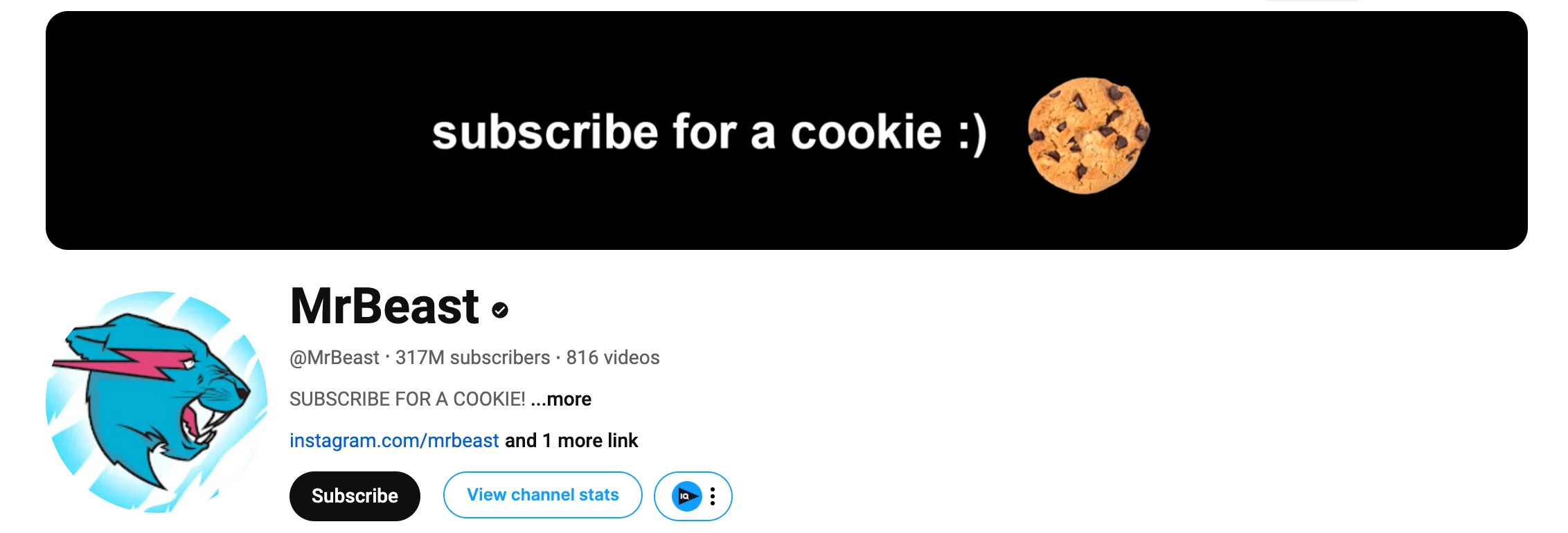 Mr Beast Subscribers
Mr Beast Subscribers
Alt text: MrBeast, the top-earning YouTuber, known for his challenge and philanthropy content.
Jimmy Donaldson, globally recognized as MrBeast, is the undisputed top earner on YouTube. As the first creator to surpass 300 million subscribers, his estimated annual income of $700 million is unparalleled. MrBeast’s channel is famous for extravagant giveaways, elaborate challenges, and philanthropic endeavors, consistently attracting massive viewership and engagement.
Jeffree Star: Beauty and Business Mogul
Channel: @jeffreestar
Subscribers: 15.8 million
Niche: Makeup, Beauty, Vlog
Estimated Annual Income: ~$200 million
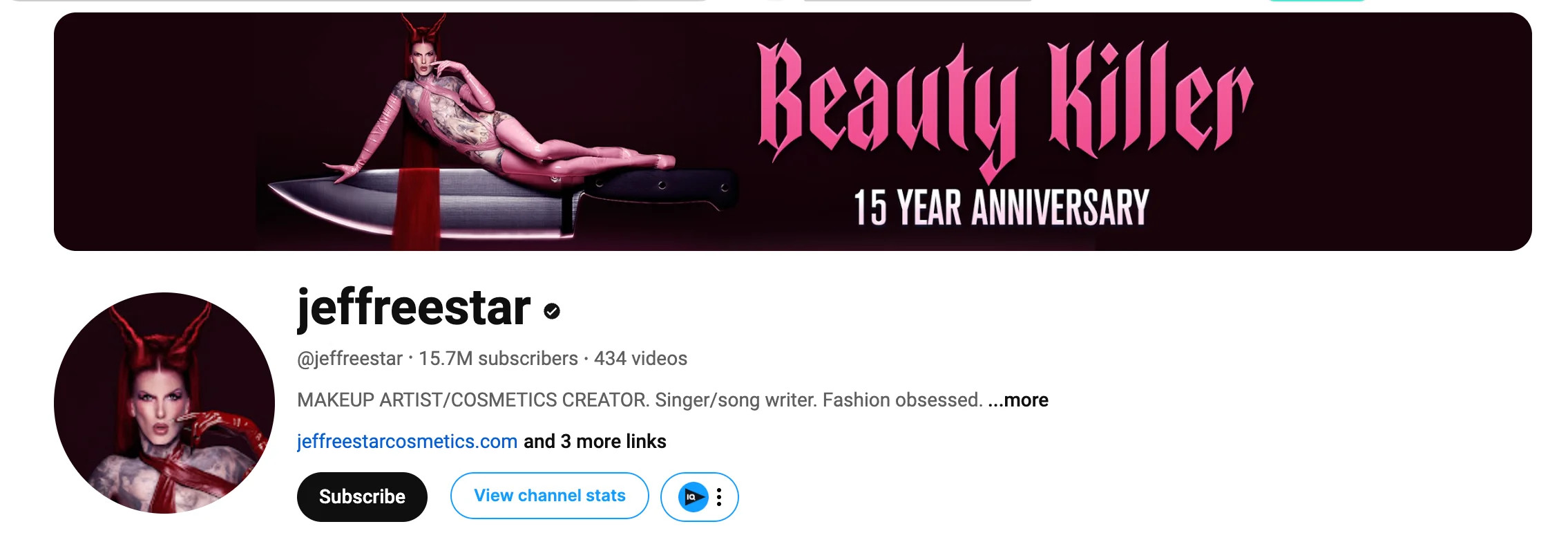 Jeffree Star subscribers
Jeffree Star subscribers
Alt text: Jeffree Star, a high-earning YouTuber in the beauty and makeup niche, also a successful entrepreneur.
Jeffree Star, despite having a smaller subscriber count compared to MrBeast, is among the highest-paid YouTube personalities. A multifaceted entrepreneur, Jeffree Star’s primary income driver is his cosmetics company, Jeffree Star Cosmetics, which generates an estimated $100 million in annual revenue. His YouTube channel serves as a platform for promoting his brand and connecting with his audience.
Like Nastya: Kids’ Content Phenomenon
Channel: @LikeNastyaofficial
Subscribers: 120 million
Niche: Kids’ Content, Toy Reviews, Edutainment
Estimated Annual Income: ~$106 million
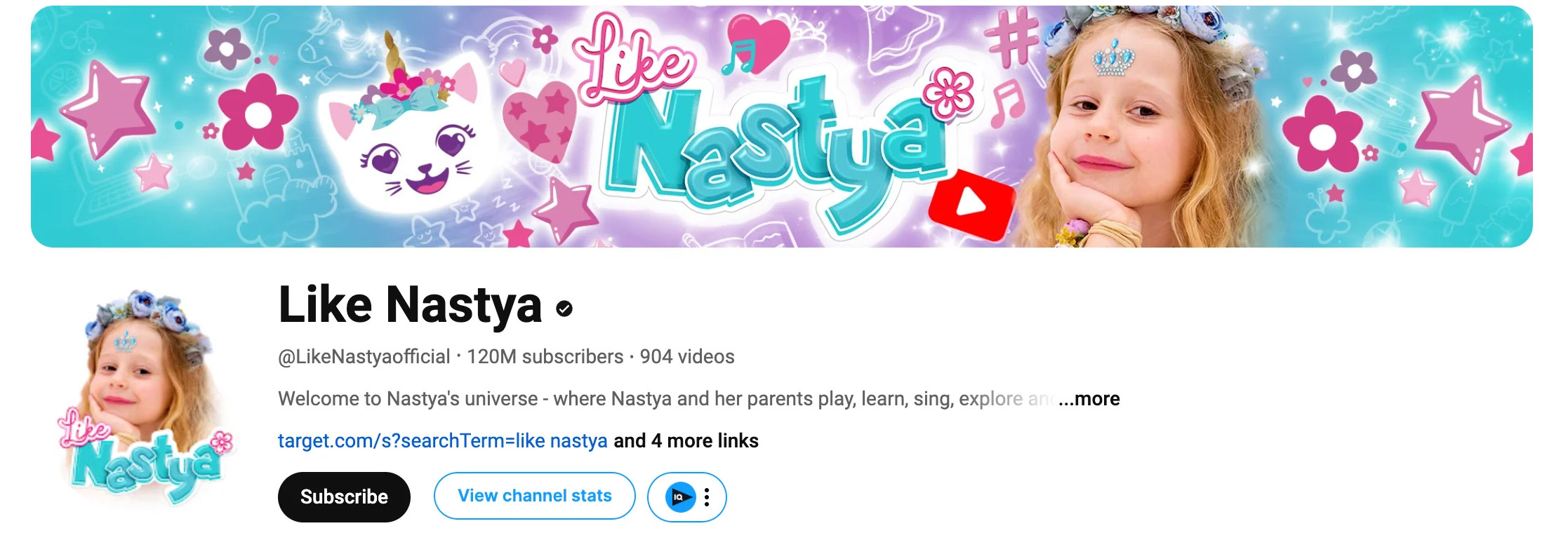 Like Nastya subscribers
Like Nastya subscribers
Alt text: Like Nastya, one of the top-earning child YouTubers, creating content for kids and families.
Anastasia Sergeyevna Radzinskaya, known as Like Nastya, is a child prodigy of YouTube. At just 10 years old, she commands a massive audience of 120 million subscribers, making her channel the most profitable kids’ content platform globally. Her content, featuring simple, engaging, and educational videos for children and families, has propelled her to become one of the wealthiest children in the world.
FAQs About YouTuber Earnings
Who is the highest-paid YouTuber currently?
As of 2024, MrBeast (Jimmy Donaldson) is estimated to be the highest-paid YouTuber, with an astounding annual income of around $700 million. His consistently high viewership and diverse revenue streams solidify his top position.
Can YouTubers earn money through channel memberships and Patreon?
Yes, both YouTube Channel Memberships and platforms like Patreon offer creators avenues to earn direct financial support from their fans. Channel memberships provide perks for paying members on YouTube, while Patreon allows for broader subscription and donation models.
How does YouTube Premium affect creator earnings?
YouTube Premium, which allows viewers to watch ad-free content, does not negatively impact creator earnings. YouTube compensates creators for watch time from Premium subscribers, ensuring they still receive revenue even when ads are not displayed.
Do YouTube Shorts monetize differently than long-form videos?
Yes, YouTube Shorts monetization operates differently. Instead of direct ad revenue sharing like long-form videos, Shorts creators are compensated from a dedicated YouTube Shorts Fund, which distributes payouts based on views and engagement with Shorts content.
What is the potential income for a YouTuber with 1 million subscribers?
While highly variable, a YouTuber with 1 million subscribers could realistically earn anywhere from $40,000 to $500,000 or more annually. Hypothetically, if all subscribers viewed every video, earnings could reach significantly higher, but engagement rates and diverse monetization strategies are key determinants of actual income.
How many subscribers are needed to make $2,000 per month on YouTube?
There is no fixed subscriber count for earning $2,000 per month. However, generating around 400,000 to 800,000 monthly views through AdSense could potentially yield this income level. Brand sponsorships and affiliate marketing can also enable channels with even 15,000 to 20,000 subscribers to reach this monthly income target.
Is being a YouTuber a high-paying career?
While top YouTubers can earn millions, the vast majority of creators earn little to no income. Only a small fraction of YouTube channels reach significant subscriber counts and revenue levels. For most, being a YouTuber is not a guaranteed path to high income, but for a select few, it can be exceptionally lucrative.
Never miss another article
Stay updated with curated content, case studies, Riverside updates, and more.
[Subscribe Now!]

